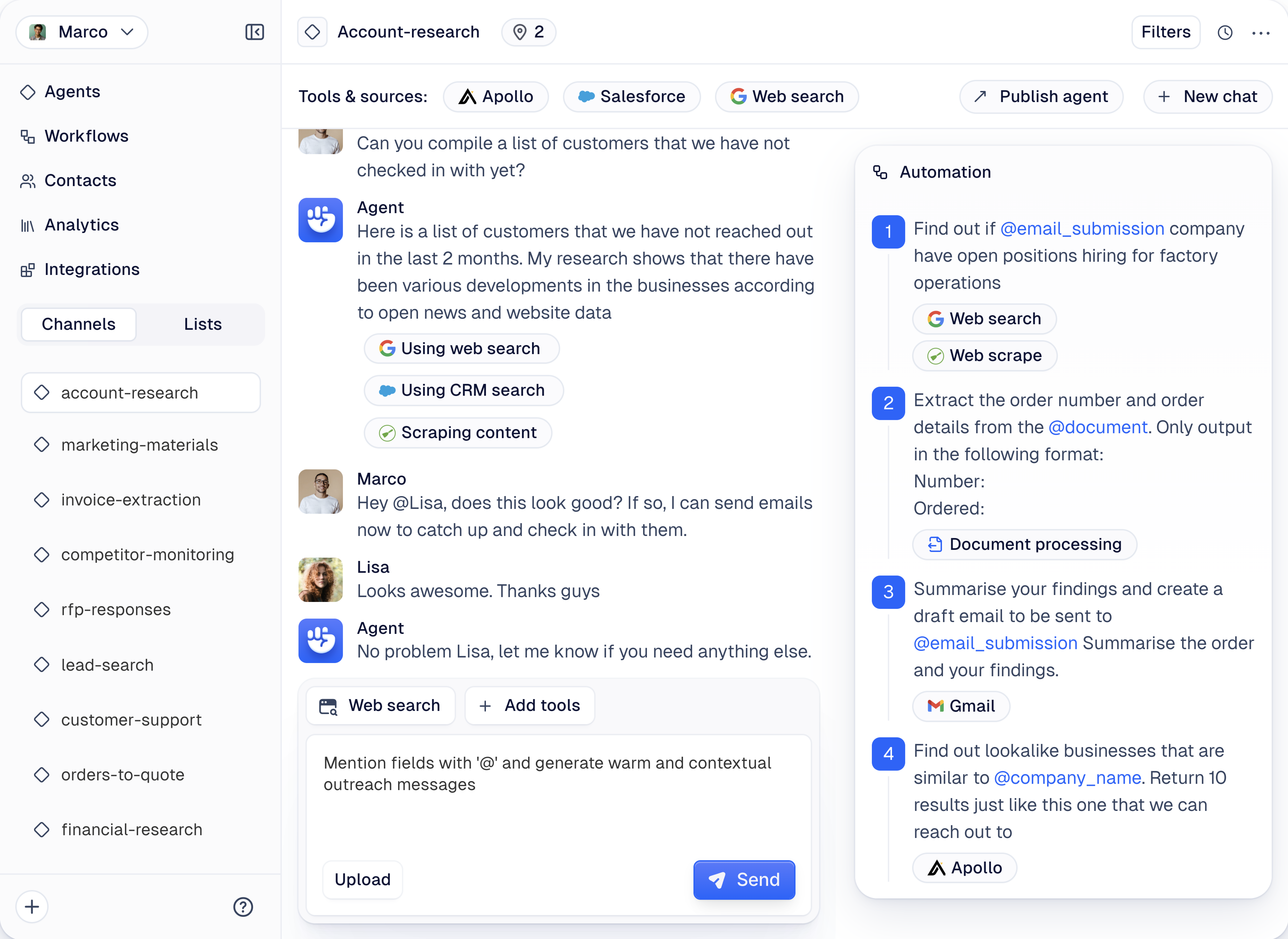January 24, 2025
by
Hussein Abou-Eita
Mastering Prompting for Sales (Part 1)
Mastering Prompt Writing for Sales Success
Not so long ago, crafting compelling outbound emails and LinkedIn messages was a tedious, time-consuming task. Sales professionals had to painstakingly research each prospect, gather relevant information, and then tailor every message to ensure it resonated. The process, while effective, was hardly scalable.
That all changed with the advent of AI tools like ChatGPT, which gave salespeople a massive productivity boost. For the first time, they could leverage AI to draft messages faster and at scale. But as with any new technology, there was a downside—many salespeople misused this newfound power. They relied on ChatGPT to churn out generic copy en masse without feeding it any personalized data about the prospects they were targeting. The result? Impersonal, ineffective outreach that didn’t resonate and often alienated leads.
Enter tools like GodmodeHQ, which revolutionized AI-powered sales outreach by addressing this very issue. These tools go beyond simply automating the writing process; they integrate AI with research capabilities, enabling sales teams to find and use relevant context about each lead. With GodmodeHQ, salespeople can input lead data into a spreadsheet, where each row represents one prospect. Columns include detailed information like:
Who the lead is
Where they live
What their company does
Their LinkedIn activity
Recent news about their company
Any other public information available
This allows sales teams to customize prompts to suit their needs, ensuring the AI generates personalized, context-rich messages that resonate with leads.
In this article, we’ll dive into the principles of prompt writing for sales. Specifically, we’ll explore how to craft prompts that:
Conduct effective research on leads and their companies.
Leverage that research to create compelling, personalized outbound messages.
Let’s break this down step by step.
Researching Leads: Crafting the Perfect Prompt
Effective outreach starts with solid research. The quality of your outbound messages is only as good as the insights you gather about your leads. While some research depends on what you’re selling and your target audience, certain aspects are universal. For example, identifying recent news or updates about a company is always a good starting point.
Here’s an example of a generic research prompt:
“I’m going to write an outbound message to @person. Find out anything about them and @company from the last 6 months that I can use to personalize my message. This can include social media posts, blogs, news articles, awards, events, etc.”
This might seem straightforward, but it incorporates several critical principles that ensure the output is useful:
1. Specify the Purpose
The prompt explicitly states that the research will be used to personalize an outbound message. This clarity frames the AI’s output, ensuring it focuses on actionable insights. Without this direction, the AI might generate a broad and unfocused response. Below is an example of what the output of the above prompt looks like when done for a bookkeeping software company on accountants. Notice how in the end of the first point, the AI is specifically mentioning how this information could be used: “This could be a good reference point for discussing current trends or updates in the bookkeeping industry.” This is useful if you’re going to write the outbound yourself, and even more useful when AI does it for you. This way, when AI is writing the outbound, it has guidance on how to use the information in the research output.

2. Define a Timeframe
The prompt limits the research to information from the last six months. Relevance is key in sales outreach. Sending an email referencing an article your lead wrote eight years ago is a clear sign you used AI (and not very effectively). By narrowing the scope to recent updates, you ensure your outreach feels timely and relevant.
3. Guide the Search
The prompt specifies the types of information to look for—social media posts, blogs, news articles, awards, events, etc. AI doesn’t inherently know what kind of information is most useful for personalization. By giving it clear instructions, you ensure the output is both relevant and concise. This also prevents the AI from spending unnecessary time searching for irrelevant details.
Advanced Research Prompts
While the generic prompt above is effective, tailoring your prompts to specific use cases can yield even better results. For example:
LinkedIn Personalization:
“Find recent LinkedIn posts by @person or comments they’ve made in the last 3 months. Focus on posts related to their work, challenges, or industry trends.”Hiring Insights:
“Identify open positions at @company and summarize the job descriptions. Highlight any roles that suggest they’re expanding or tackling specific challenges.”Software Usage:
“Find out what accounting or CRM software @company is currently using. Look for reviews, job descriptions, or LinkedIn posts that mention their tools.”Event Participation:
“Check if @person or @company has participated in any events or webinars recently. Include details like the event name, date, and topic.”
These prompts allow you to focus your outreach on highly specific pain points or opportunities, making your message even more relevant.
Tools and Best Practices
When using tools like GodmodeHQ, the process becomes even more streamlined. The AI automatically references its sources, reducing the likelihood of hallucinated (inaccurate) information. If you’re using another tool, always prompt the AI to include sources to maintain credibility.
For example:
“Include links to the articles or posts where you found this information.”
Conclusion
Prompt writing is both an art and a science. By crafting thoughtful prompts, you can unlock the full potential of AI to supercharge your sales outreach. Whether you’re researching leads or writing personalized messages, the key is to be clear, specific, and purposeful. With tools like GodmodeHQ, you can scale your efforts while maintaining the quality and personalization that drive results.
Happy prompting—and happy selling!

